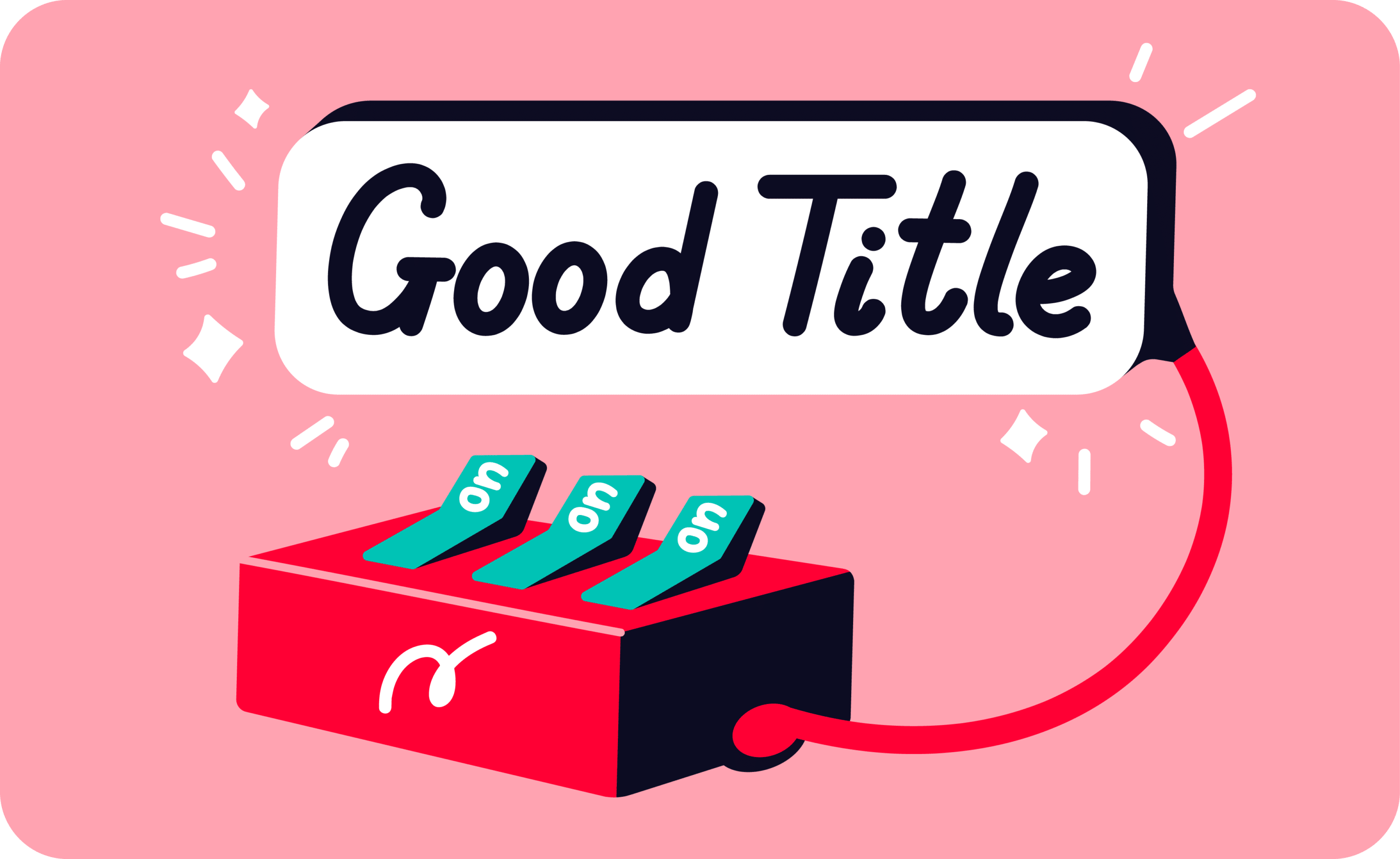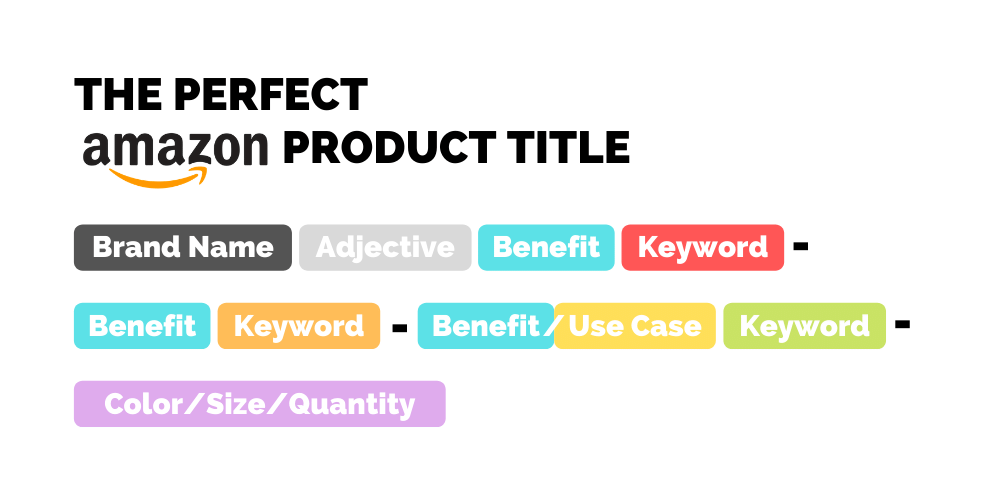PRIVATE LABEL SHIFU BLOGS
Ready to dive into more exciting content? Explore our latest blogs now!

Expert Tips for Optimizing Your Amazon Product Titles
“When something is important enough, you do it even if the odds are not in your favor.” - Elon Musk
Optimizing your Amazon product listing for conversions can be a challenging yet crucial task for increasing your sales and visibility on the platform. Among the various elements of a product listing, the product title stands out as a fundamental component. A well-crafted title can significantly impact your product’s search ranking, click-through rate, and ultimately, conversions. This comprehensive guide will cover all aspects of Amazon product title optimization, providing you with actionable insights to help you create titles that attract and convert potential customers.
Table of Contents
Why is the Title Important?
What are the Amazon Product Title Guidelines?
Best Practices for Amazon Product Title Optimization
Start with the Customer
Keywords in Amazon Product Title Optimization
Use Amazon Seller Software
Include Product Synonyms
Avoid Keyword Stuffing
Keywords and the Canonical URL
What is a Canonical URL on Amazon?
Include Features, Benefits, and Uses
Follow a Structure for Your Product Title
Lead with the Brand Name
How to Structure Your Title
Product Title Optimization with Amazon A/B Testing
Amazon Product Title Optimization for Mobile
Optimize Character Count
Make it Readable
Should You Hire a Professional?
Key Takeaways
Why is the Title Important?

The product title on Amazon, along with the main image, reviews, and price, is one of the few elements visible on the Amazon search engine results page (SERP). The title acts as a headline, offering key information about your product. Including valuable keywords and benefits helps attract the right customers.
Because there are so many products on Amazon, it’s easy to get lost in a sea of options. This is why optimizing your title is so important. Many big brands don’t take the time to optimize their listings, so this is a perfect opportunity for you to attract a customer to your product.
An optimized title can:
Increase Visibility: Proper use of relevant keywords in your title helps improve your product’s ranking in Amazon’s search results, making it easier for customers to find your product.
Enhance Click-Through Rate (CTR): A clear, informative, and appealing title can entice customers to click on your product listing from the search results page.
Improve Conversion Rate: Once a customer clicks on your listing, a well-written title helps set accurate expectations about the product, reducing bounce rates and increasing the likelihood of a purchase.
Understanding Amazon's Title Guidelines

Before diving into best practices, it's essential to understand Amazon's guidelines for product titles. Amazon has specific rules to ensure consistency and quality across its marketplace.
Key guidelines include:
Character Limit: Titles should not exceed 200 characters, including spaces. However, this limit can vary by category, so always check the specific requirements for your product category.
No Symbols or Fancy Characters: Avoid using symbols or special characters such as ~ ! $ ? _ ~ { } # < > | ; ^ ¬ ¦ ™ ¢ ∞.
No Promotional Phrases: Do not include phrases like "free shipping" or "limited time offer" in your title.
Product-Identifying Information: Ensure your title contains essential information that clearly identifies the product, such as brand, model, size, and color.
Best Practices for Amazon Product Title Optimization

When optimizing product titles for Amazon, adhering to best practices ensures that your titles effectively communicate value, attract potential customers, and ultimately drive conversions.
Here's an elaboration on each best practice:
Be easy to read: Customers browsing through Amazon's search results often scan product titles quickly. Therefore, it's essential to make your title easily understandable at a glance. Use clear and concise language, avoid jargon or overly technical terms, and ensure proper grammar and punctuation.
Be written in title case: Title case refers to capitalizing the first letter of each word in the title, except for articles, conjunctions, and prepositions. This format not only enhances readability but also gives your title a professional appearance. For example, "Wireless Bluetooth Headphones with Noise Cancelling" is written in title case.
Persuade the customer to click: Your product title serves as a critical point of contact between your product and potential customers. It should not only describe the product but also entice customers to click on the listing to learn more. Incorporate persuasive language or enticing phrases that highlight unique selling points or benefits of the product.
Answer customer questions (features, benefits, uses): Anticipate the questions that customers may have about your product and address them directly in the title. Include key features, benefits, or use cases that differentiate your product from competitors and resonate with potential buyers. For example, if you're selling a fitness tracker, your title might mention features like step tracking, heart rate monitoring, and waterproof design.
Use as many characters as necessary to communicate value: While Amazon imposes a character limit for product titles, it's essential to use as much of that limit as possible to convey the value proposition of your product. Maximize the available space by including relevant keywords, features, and benefits that highlight the unique selling points of your product. However, prioritize clarity and readability over stuffing unnecessary keywords or information into the title. Ensure that every word adds value and contributes to the overall effectiveness of the title in attracting and engaging potential customers.
By following these best practices, you can optimize your Amazon product titles to effectively capture the attention of potential customers, differentiate your products from competitors, and drive higher click-through rates and conversions.
Start with the Customer
Focus on the customer when writing an optimized title. Create a seamless buyer journey by considering their intent and search behavior.

Your title should:
Clearly describe the product
Answer their search query
Fit their search intent
Make sense and signal value
Suggest how to use the product
Provide a benefit-driven description
Appear as if written by a human
Keywords in Amazon Product Title Optimization
Relevant keyword phrases in your product title improve visibility. Conduct thorough keyword research to align with customer intent and ensure your most important keywords are included in the title.

Before you begin writing for your product, you need to dedicate some time to keyword research. Keyword research is directly related to the customer’s intent. You have to think about what words and phrases will help them find the product they’re looking for. Amazon’s search algorithm gives more importance to the keywords in your title than your description, bullet points or any other text. This means you should try to include your most important and most relevant keywords in your product title. This should be easy as these keywords should be describing your product anyway.
Use Amazon Seller Software
Utilize Amazon seller software like Helium 10 for keyword research and trend identification. Tools like Scribbles can help optimize listings by highlighting keywords based on search volume.

Keyword research can be daunting. It’s helpful to have a well-defined process in combination with a proven Amazon seller software (we use Helium 10) to perform keyword searches, identify trends and see which keywords and phrases your competitors are ranking for. You’ll see through your research what keywords have a higher search volume. This way you can identify which are most relevant to your product and use them in your title.
Include Product Synonyms
Incorporate multiple terms customers might use to refer to your product, enhancing visibility. Ensure synonyms are relevant to avoid negatively impacting conversion rates.

If you’ve done thorough keyword research, you may find that there are multiple terms a customer can use to refer to your product. Because Amazon’s algorithm weighs the keywords and phrases in the title more heavily than in the bullets or description, it’s in your best interest to include more than one of those synonyms. For example, if you are selling headphones, consider including terms like "earphones" and "earbuds" in the title to cover different search terms customers might use.
Avoid Keyword Stuffing
Avoid cramming too many keywords into the title, which can make it sound unnatural and deter customers. Maintain a natural flow and include benefits and use cases to engage customers.

It’s possible to include too many keywords. This is called keyword stuffing. Trying to cram as many keywords into a sentence or title creates a bad experience for your customer and could deter them from clicking. Always remember to keep your writing natural-sounding and include benefits and use cases that will spark your customer’s interest.
Keywords and the Canonical URL
A canonical URL is created from the first five words of your Amazon product title, improving external search engine visibility. Structure your title to benefit from this feature.
What is a Canonical URL on Amazon?

A canonical URL is usually created from the first five words of your Amazon product title. Amazon creates these URLs so that external search engines can find your product. This is especially useful because even if a customer begins their search on Google, if your canonical URL fits their search, your Amazon listing will rank higher and you might just have a new customer.
For example, if you have a customer searching for “organic natural mosquito repellent” on a search engine and your title looks something like this: [Brand Name] organic natural mosquito repellent, you will have a higher chance of appearing in the search and this canonical URL will lead them to your product on Amazon.
Include Features, Benefits, and Uses

Your product title should deliver valuable information, including features, benefits, and use cases, to stand out in search results and attract clicks.
An optimized Amazon product title should deliver as much valuable information as possible to your customer. A customer scans through dozens of results all displayed on one page and they want to be able to find information quickly. The more information they can gather about your product from the title, the more likely they are to click.
How do you ensure you’re providing the right information? Focus on what speaks to the customer. Include the features, benefits, and use cases of your product.
Follow a Structure for Your Product Title

Consistency in product listings builds trust. Start with the brand name and follow a structured approach to maximize character usage and relevance.
When setting up products on Amazon, it’s helpful to follow a structure for product listings and Amazon title optimization. This gives your brand a consistent look, feel and message, which builds trust and familiarity.
Lead with the Brand Name

We recommend beginning each title with the brand name. This not only helps you establish recognition if you’re just beginning to promote your products, but it helps customers easily identify what they’re looking for.
How to Structure Your Title
We like to follow a general structure for product titles. This is not always so straightforward with every product or category. Depending on the product, you may not have a lot of characters to work with. Perhaps your product is very straightforward and won’t need to delve into details.
A typical structure might look like this:
Brand Name
Key Product Feature/Use Case
Main Benefit
Additional Features/Specifications
Product Title Optimization with Amazon A/B Testing

Use Amazon’s Manage Your Experiments tool for A/B testing to determine the most effective product title.
Amazon’s Manage Your Experiments is a tool designed for A/B testing. Amazon will put 2 title options and test them against each other. Once enough evidence establishes which one is better, it will even auto-publish the title.
Amazon Product Title Optimization for Mobile

Optimize titles for visibility on both mobile and desktop. Prioritize relevant information at the beginning of the title.
Even if you have up to 200 characters to use in your title, not everything will be visible. There is a cut-off point. Include the most relevant information first so that your customer can find what they’re looking for whether on mobile or desktop.
Optimize Character Count
Depending on the category of the product, titles can be up to 200 characters long. According to BlueBoard’s research, 90% of best-selling products use at least 50 characters and 42% use over 100. You should absolutely try to use as many characters as you can to showcase the features, benefits and uses of your product.
Make it Readable
As important as keywords are, it’s also important that your customer can read your title easily. We break up our titles into digestible sections using dashes to physically separate the text making it easier for a customer to scan.
Should You Hire a Professional?

Consider hiring a professional for Amazon product optimization to benefit from their expertise and tools, ensuring your listings are optimized for sales.
There are many aspects to consider when starting your Amazon journey, from keyword research and copywriting to product photography and creating visual assets. A professional can help optimize your product listings efficiently.
Key Takeaways

Optimizing Amazon product titles requires effort and practice. Focus on:
Understanding Customer Needs
At the core of effective Amazon product title optimization is a profound understanding of customer needs and preferences. By putting yourself in the shoes of potential buyers, you can anticipate what they're searching for and tailor your product titles to address their requirements. This customer-centric approach ensures that your titles resonate with the target audience, increasing the likelihood of engagement and conversion.
Including Relevant Keywords
Keywords play a pivotal role in enhancing the discoverability of your products on Amazon. Conduct thorough keyword research to identify the terms and phrases commonly used by your target audience when searching for similar products. Integrate these relevant keywords strategically into your product titles to improve search visibility and attract qualified traffic to your listings.
Balancing Features, Benefits, and Uses
A well-optimized product title strikes a delicate balance between highlighting key features, communicating benefits, and illustrating potential uses of the product. While it's crucial to convey factual information about the product's specifications and capabilities, it's equally important to emphasize the value proposition and how the product can address the customer's needs or pain points. By incorporating features, benefits, and uses effectively, you create a compelling narrative that resonates with potential buyers and motivates them to explore further.
Following a Structured Process
Consistency and structure are paramount when optimizing Amazon product titles. Establishing a standardized process ensures that you approach title optimization methodically, minimizing the risk of overlooking critical elements or making haphazard changes. Define clear guidelines for title structure, keyword placement, and messaging to maintain coherence across all your product listings. By adhering to a structured process, you can streamline the optimization workflow and achieve more consistent results across your Amazon catalog.
Final thoughts
AMZ Shifu isn't just about managing your Amazon advertising; we're here to help you conquer it.
We know that optimizing your product listing can feel like navigating a maze, but fear not - we've got the roadmap to success. Our team specializes in turning your ad spend into a powerhouse for sales and brand recognition, ensuring that every dollar you invest works as hard as possible.
That's why we've put together this comprehensive guide to Amazon product title optimization, covering everything you need to know to create titles that grab attention and drive conversions.
Book a Call with us today!
We'll walk you through the importance of the title, Amazon's guidelines for crafting the perfect one, and best practices for optimization. From understanding customer needs to including relevant keywords and balancing features and benefits, we'll show you how to create titles that pack a punch.
But we don't stop there. Our expert team will guide you through strategic planning, budget management, and performance monitoring to ensure your campaigns are not only effective but sustainable in the long run. With our help, you can confidently grow your brand on Amazon and achieve your business goals.
So, are you ready to unlock the full potential of Amazon advertising?
Don't let the odds hold you back. Book a call with us today and let AMZ Shifu help you turn advertising challenges into success stories.
AND MEET AND SEE REAL CONVERSATIONS FROM OUR SUCCESSFUL MENTEES
⭐⭐⭐⭐⭐
GET THE LATEST NEWS
Books Recommendation for Amazon Private Label
IF YOU ARE SERIOUS ABOUT TURNING YOUR LIFE INTO A NEW CHAPTER CLICK THE BUTTON BELOW TO APPLY FOR OUR DISCOVERY CALL
NO COMMITMENT REQUIRED IF YOU ARE NOT A GOOD FIT
DISCLAIMER: The sales figures stated anywhere on this funnel are individual sales figures and marketing results. Please understand that sales figures are not typical, and we are not implying that you will duplicate them. We have the benefit of doing online marketing for 4+ years, and have an established following as a result. The average person who simply purchases any “how-to” program may not follow through on what they are being taught and because of that we cannot guarantee any specific result. We are using these references for example purposes only. Sales figures will vary and depend on many factors including but not limited to background, experience, and work ethic. All business entails risk as well as massive and consistent effort and action. If you’re not willing to accept that, this is not for you.
>ABOUT THE STRATEGY SESSION: After completing an application, you will get the opportunity to schedule in a Strategy Session with a qualified person from our team. This is completely optional. The Session lasts about 45 minutes and if you do not want to work more closely with us, you can leave without buying anything. The Strategy Session to provide insights insights on the operations of your business and offer strategies for growth that you will be able to implement right away.
NOT FACEBOOK™: This site is not a part of the Facebook™ website or Facebook Inc. Additionally, This site is NOT endorsed by Facebook™ in any way. FACEBOOK™ is a trademark of FACEBOOK™, Inc. Hi! We use cookies, including third-party cookies, on this website to help operate our site and for analytics and advertising purposes. For more on how we use cookies and your cookie choices, go
here for our cookie policy!
@2024 AMZSHIFU.COM All Rights Reserved










